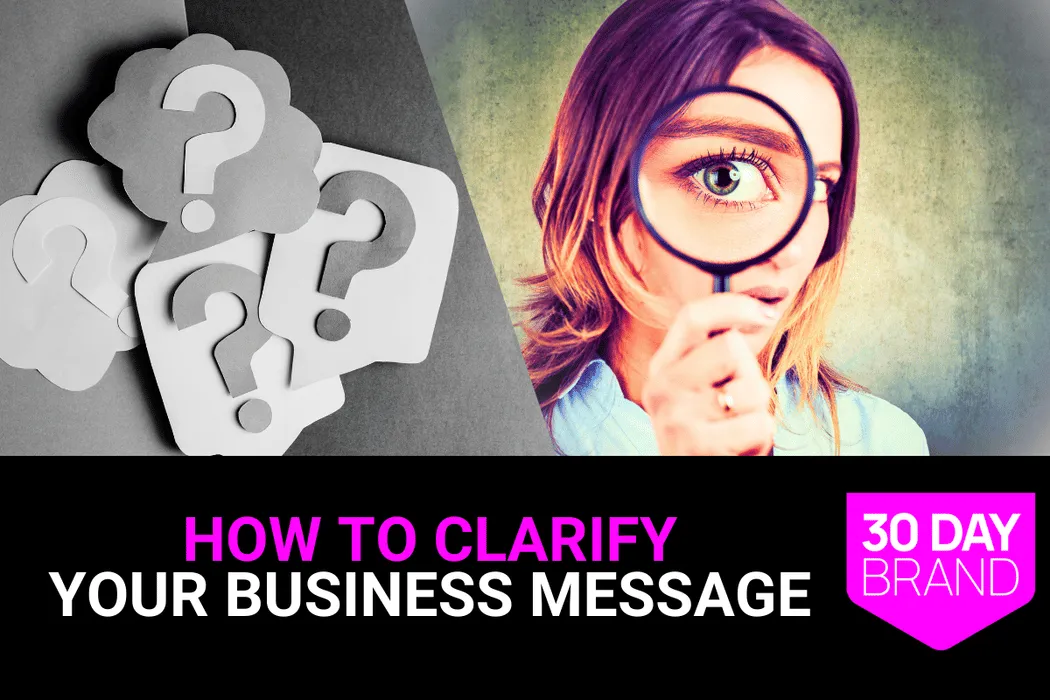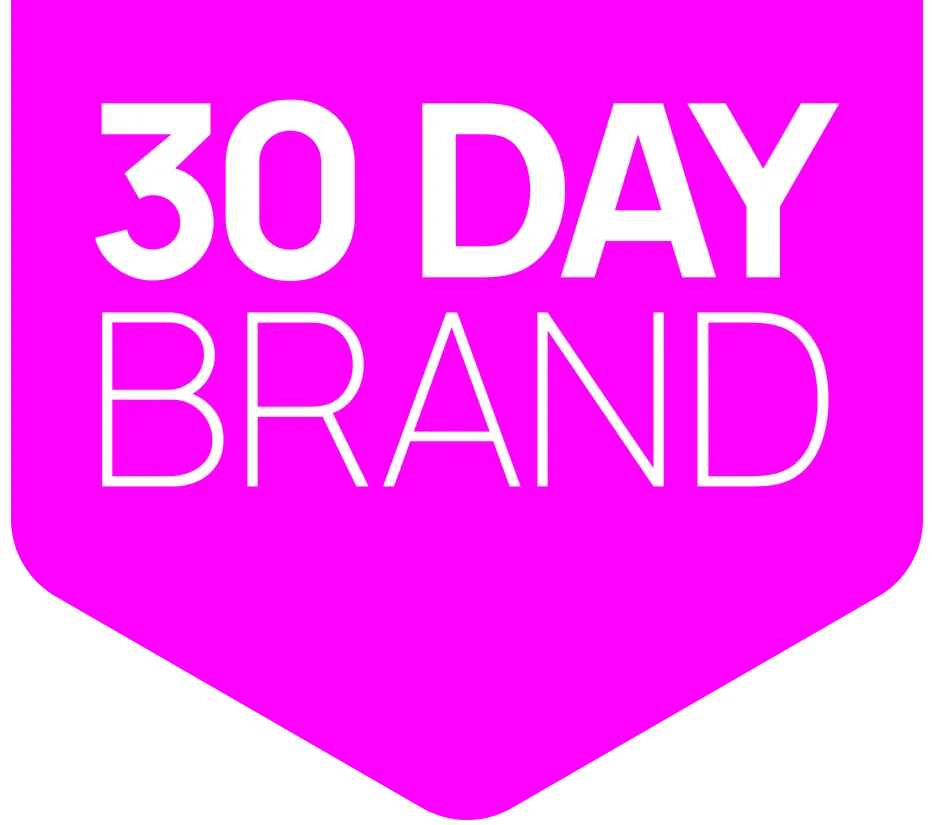
How to Clarify Your Business Message in 30 Days
Quick Definition
Clarifying your business message in 30 days = A focused, four-week sprint to cut through your own noise, figure out what you actually sell, and create a message so clear it makes you the only choice. It’s a detox for your marketing.
The Pain of a Muddy Message
Another month, another pile of marketing efforts that went nowhere. You’re creating content, you’re running ads, you’re networking, but your revenue is flat. You know you’re better than your competitors, but they’re the ones getting the clients. Why? Because your message is a confusing mess. Companies with unclear messaging have a 50% higher cost per lead (Gartner, 2024) because you’re paying to confuse people. You’re tired of explaining what you do over and over, only to be met with blank stares. You’re frustrated that your expertise isn’t translating into sales. This isn’t just a marketing problem; it’s a business-threatening crisis, and it’s time to fix it.
The 30-Day Message Clarification Plan
Week 1: The Brutal Audit (Days 1-7)
Goal: To confront the mess you’ve made. You can’t fix a problem you don’t understand. This week is about a ruthless, honest assessment of your current messaging.
Actions:
Day 1-2: The Message Dump. Gather every piece of marketing material you have: your website copy, your last 10 social media posts, your sales deck, your email signature. Print it all out and put it on a wall. Stare at it. See the inconsistencies. Feel the pain.
Day 3-4: The Customer Interrogation. Interview 3-5 of your best clients. Ask them: "What problem did we solve for you?" "How would you describe what we do to a friend?" "What was the biggest result you got from working with us?" Record these calls. This is the most important thing you will do all month.
Day 5-6: The Competitor Teardown. Look at your top 3 competitors. What is their main message? Who are they talking to? What are they promising? Don't copy them, but understand the conversation your customers are already in.
Day 7: The "One-Sentence" Attempt. Based on your audit, try to write one sentence that explains what you do, who you do it for, and the result they get. It will be terrible. That’s the point.
Expected Results: A clear, painful understanding of why your messaging isn’t working. You’ll have a baseline and a collection of your customers’ actual language—the raw material for your new message.
Week 2: Building the Framework (Days 8-14)
Goal: To take the raw material from Week 1 and build a simple, powerful messaging framework. This is where you build the bones of your new message.
Actions:
Day 8-10: The Value Proposition Workshop. Lock yourself in a room with your customer interview transcripts. Using their words, refine your one-sentence value proposition. It should be so simple a 10-year-old can understand it. This is the foundation of your entire business messaging framework.
Day 11-12: The 3-Point Message Map. Identify the three core ideas that support your value proposition. What are the three things your customers need to believe to buy from you? For each point, find a proof point (a stat, a testimonial, a mini-case study).
Day 13-14: The Jargon-Free Zone. Go through your new framework and eliminate every single piece of corporate jargon. If you wouldn’t say it to a friend at a bar, it doesn’t belong in your messaging.
Expected Results: A clear, concise messaging framework that is built on customer language and free of jargon. You’ll have a value proposition and three supporting messages that will become the foundation of all your marketing.
Week 3: The Real-World Test (Days 15-21)
Goal: To see if your new message can survive contact with actual humans. A message that sounds good in a boardroom is useless if it doesn’t work in the real world.
Actions:
Day 15-17: The LinkedIn Overhaul. Rewrite your LinkedIn headline and the “About” section of your personal and company profiles using your new framework. Don’t just copy and paste; adapt the message for the platform.
Day 18-19: The Homepage A/B Test. Change the headline and sub-headline on your website’s homepage to reflect your new messaging. If you can, run an A/B test to compare the old message to the new one.
Day 20-21: The Sales Call Script. Use your new one-sentence value proposition to open your next two sales calls. Pay close attention to the reaction. Do they lean in? Do they ask better questions? Or do they look confused?
Expected Results: Real-world feedback. You’ll know very quickly if your message is resonating. You’ll see it in your LinkedIn connection requests, your website’s bounce rate, and the quality of your sales conversations. This is where you get the data to prove your message is working.
Week 4: The Rollout (Days 22-30)
Goal: To systematically update all your marketing assets with your new, proven message. This is about creating consistency and amplifying your new clarity.
Actions:
Day 22-24: The Content Calendar. Create a 30-day content calendar based on your new messaging framework. Each piece of content should reinforce one of your three core messages.
Day 25-27: The Sales Deck Redesign. Overhaul your sales presentation to lead with your new value proposition and supporting messages. Cut out everything that doesn’t support your core story.
Day 28-29: The Email Signature Update. Update your entire team’s email signatures to include your new one-sentence value proposition. It’s a small thing, but it creates massive consistency.
Day 30: The Team Training. Get your entire team on a call and walk them through the new messaging framework. Make sure everyone who talks to a customer is telling the same story.
Expected Results: A consistent, powerful message across all your marketing channels. You’ll have a clear, compelling story that your entire team can tell, and you’ll finally start attracting the right clients.
Quick Implementation Guide
Start here: Don't get overwhelmed. The most important part of this entire plan is the Customer Interrogation in Week 1. If you do nothing else, do that.
Then do this: Once you have your customer language, focus on the One-Sentence Value Proposition. This is the 80/20 of message clarity. Get this right, and everything else gets easier.
Measure this: Your lead quality. Are you getting fewer, better leads? Are your sales conversations starting from a place of understanding instead of confusion? That's the metric that matters.
Key Statistics
Companies with unclear messaging have a 50% higher cost per lead (Gartner, 2024).
Consistent messaging across all channels can increase revenue by up to 23% (Lucidpress, 2024).
A clear value proposition can increase conversion rates by up to 200% (Unbounce, 2024).
FAQ
Can I really do this in 30 days?
Yes, if you're focused. This isn't a casual project; it's a sprint. You have to be ruthless about cutting out the noise and focusing on what matters. If you follow the plan, you'll have a dramatically clearer message in 30 days.
What if I don't have time for all of this?
Then you don't have time to grow your business. How much time are you currently wasting on marketing that doesn't work? How many deals have you lost to confusion? This isn't a time-waster; it's an investment that will pay for itself within a quarter.
What if my team won't get on board?
Then you have a leadership problem, not a messaging problem. If you can't convince your own team of your value, how are you going to convince your customers? Use this process to get everyone aligned. If they still won't get on board, you have bigger issues to deal with.
What if I get stuck?
You will. The hardest part of this process is getting out of your own head. That's why the customer interviews are so important. When you're stuck, go back to their words. They have the answers.
What happens after the 30 days?
This isn't a one-and-done fix. It's the start of a new discipline. You have to constantly be listening to your customers, watching the market, and refining your message. But now you have a system for it. You're not just guessing anymore.
Ready to Finally Get Clear and Start Growing?
You now have a proven 30-day plan to transform your confusing message into a powerful sales tool. But a plan is only as good as its execution—and execution requires focus, discipline, and a willingness to be uncomfortable.
Here's what to do next:
Step 1: Start with our FREE Brand Message Analyzer Tool to get a quick, honest assessment of how confusing your current message really is.
Step 2: Commit to Week 1 of the plan. Block out the time in your calendar. Schedule the customer interviews. This is the hardest part, but it's also the most valuable.
Step 3: For a comprehensive system that goes beyond messaging to build a premium brand, explore our proven SCALE System. It's the framework we use to help our clients systematically attract high-value clients.
Step 4: When you're ready for an expert to guide you through this process and hold you accountable, book a call with our team. We'll help you get clear and get growing.
Remember: clarity is a choice. You can choose to stay stuck in the fog of a confusing message, or you can choose to do the work to cut through the noise and become the only logical choice for your ideal clients.
Your competitors are hoping you stay confused. Don't give them the satisfaction.










